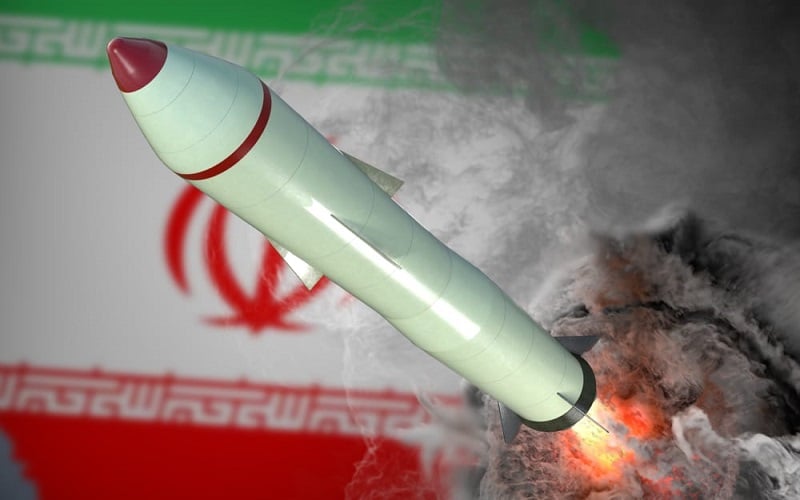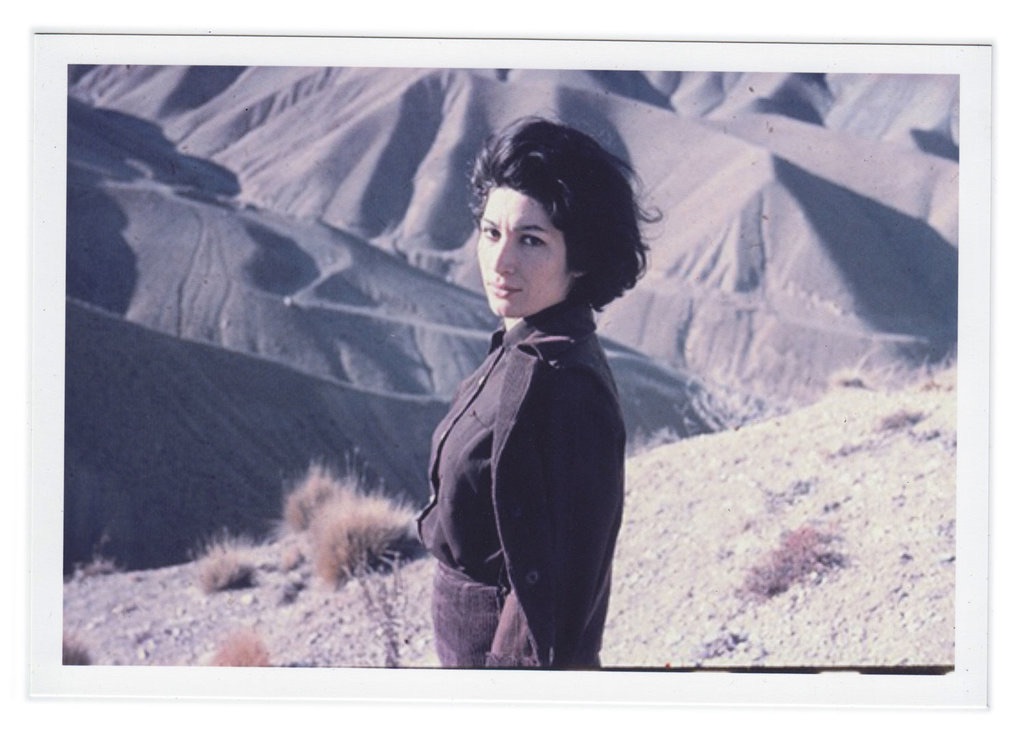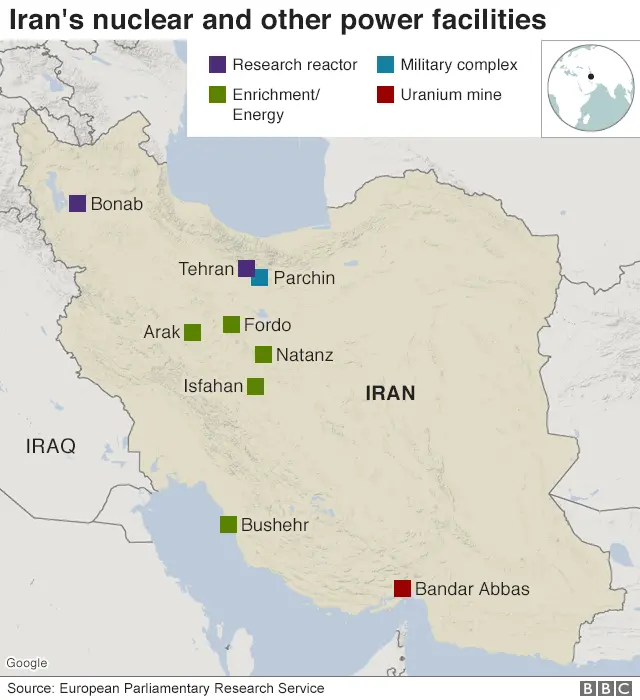A specter of a headline broke through the newscape about a week ago and then vanished as quickly as it appeared.
The short article relates to a cluster of explosions heard near a nuclear facility in Iran, and it is a spiral of speculation–festooned with Twitter videos–making the origin of the explosions that it describes as much an apparition as the story itself. To date, there has been no follow up and no clear explanation.
A few lines of text from the article suggest that the site was attacked by drones, and the surface-to-air defenses were used to repel the attacks. The bold preface of the article also mentions a fire that destroyed anti-aircraft artillery.
For those of us playing “the game,” we are left to wonder: Did Iran make a mistake? Did Israel or the U.S. send drones to test the might of the Isfahan nuke facilities’ defenses, which have long been considered a threat? And is Iran preparing for an attack from the West as things heat up in the Middle East?
Of course, the true phantom of Isfahan is the cause of all this speculation and preparation: namely, the Iranian nuclear weapon. Though the Ayatollah tells us Mohammad would not approve of a nuke, the inspectors at the IAEA (International Atomic Energy Agency) found something chilling in February 2023.
So, are the Iranians making nukes or not?
Let’s dive in.

Iran has many military capabilities but are nukes on the menu? (Image courtesy of irannewsupdate.com)
Table of Contents
-
01
Understanding the Iranian Power Structure
-
02
It Ain’t the Same 1950 Iran Anymore
-
03
Nuclear Energy or Weapons Development?
-
04
Iran’s Stance on Nuclear Weapons
-
05
Does Any of it Really Matter to Israel?
-
06
So, What Should WE Do?
-
07
Final Thoughts
-
08
Frequently Asked Questions
Understanding the Iranian Power Structure
“I explicitly declare that the Islamic Republic of Iran is not seeking to develop nuclear weapons and such weapons have no place in our defense doctrine,” Iran President Seyyed Ebrahim Raisi has said.
Case closed. Article over. Right?
Well, maybe if you have never heard the name “Ayatollah Khamenei.” While Iran has a president, they also have a Supreme Leader. Sounds pretty intergalactic, and the guy certainly has Palpatine vibes.
So, what the hell is a “Supreme Leader,” and how does it fit into the power structure and decision making of Iran?

This is the strange government structure of Iran. (Image courtesy of The Washington Post)
"The American president’s foolish remarks against our people show the depth of America’s hostility towards the entire Iranian nation. America is the number one enemy of our nation."
These are the words of the Ayatollah. Pretty clear.
And in case that quotation wasn’t enough, here’s another: “We kiss the hands of those who planned the attack,” he was quoted following the October 7th attacks on Israel that saw men, women, and children slaughtered, kidnapped, and raped.
Reading these quotes, one can’t help but feel sorrow that the Iranians had their beautiful society stolen from them fifty years ago by Islamic radicals, stunting the growth and capability of the incredible Persians.
It Ain’t the Same 1950 Iran Anymore
While it may surprise you to learn, Iran’s nuclear program is damned near as old as ours in the U.S. The only difference is the Islamic Revolution of 1979, which destroyed a nation on the cutting edge of women’s rights and science.
Their nuclear program traces its roots back to the mid-1950s, when Eisenhower's Atoms for Peace program included an agreement with Shah Mohammed Reza Pahlavi of Iran. This accord, formalized later in the decade, involved the United States providing a research reactor to Iran. And as previously mentioned, the U.S. continued to support the development of Iran's peaceful nuclear program until the Iranian Revolution.
This uprising, which started in 1978, saw a significant event on March 8, 1979, International Women's Day, when around 100,000 Iranian women gathered in the streets to protest against the imposition of the headscarf.
Bear in mind that, along with the veil, the headscarf had been banned in Iran in the 1930s. Sadly, however, this 1979 protest was the last breath of the empowered feminine in Iran for a very long time. Indeed, it has only been recently that Iran women have once again stood against the state’s enforced concealment of their beauty and individuality.
It is only fitting that we should close this section with the words of twentieth century poet and Iranian superstar Forough Farrokhzad, a woman who died in 1967 and whose persona and art would never have existed, had she been born after the revolution.
“Life is perhaps that enclosed moment
when my gaze destroys itself in the pupil of your eyes
and it is in the feeling
which I will put into the Moon’s impression
and the Night’s perception.”

Forough near Tehran in 1966 (Image courtesy of iroon.com)
Nuclear Energy or Weapons Development?

Iranian nuclear and power facilities. (Image courtesy of BBC.com)
As of 2020, Iran’s single nuclear reactor is responsible for generating two percent of the nation’s electricity. This number is expected to grow, too, as they are in the process of building another reactor to generate more. While it’s easy to suggest this is a low amount of energy, we do have to be clear about issues like sanctions that could drastically affect their ability to generate power like Western nations.
To Iran’s credit, in 2015 they agreed to dismantle much of their nuclear program and open their facilities to inspection in return for sanctions relief. Though it was never quite clear what they were dismantling, one suspects that it involved facilities that could have been used to do something other than generate nuclear power.
This was an agreement between many nations and Iran known as the JCPOA, or the Joint Comprehensive Plan of Action.
Though Trump pulled out of the JSCPOA for a number of reasons, one of the most significant was the discovery of intelligence from Israel’s Mossad that showed Project AMAD was far from dead.
🔶 Project AMAD

This is the breakdown of the AMAD Plan and Iran’s pathway to Nukes from 89’ to ‘03. (Image courtesy of isis-online.org)
From 1989 to 2003, Iran had a dedicated nuclear weapons program. This is not top secret, and it was deeply researched and exposed in 2007. As you can see from the graphic above, this was a well-thought-out and advanced program with many divisions and subdivisions.
It is believed by many that this process has never stopped, and what was discovered in an Iranian nuclear facility earlier this year is proof that the Iranians are hardly finished with AMAD.
So rather than hand out nuclear survival kits to every American and Israeli, Donald Trump decided to take action and pull out of the Iran nuclear agreement.
🔶 Highly Enriched Uranium
It takes uranium enriched to 90% to make nuclear weapons–quite an undertaking, to be sure! By contrast, nuclear power requires around 3% uranium enrichment, making it far more accessible.
Imagine the surprise of IAEA officials, then, when–upon inspecting an Iranian facility in February of 2023–they found uranium enriched to nearly 84%. Notably, Iran has long been enriching uranium to 60%, a step largely viewed as a political maneuver, since this level of enrichment has no practical application for them other than reaching 90% enrichment.
Ultimately, many signs indicate that Iran is slowly developing a system that includes all the parts and pieces to make nuclear weapons without actually making them. They want–and may have–the entire system in place so that making a weapon happens quickly and covertly in underground tunnels. That way, no one would really know.
There is also a good chance that this weapon would not be delivered by Iran itself, considering its array of proxy terror groups in operation around the Middle East. Imagine hunting a weapon that could be in the hands of so many violent groups–you would need high level radiation detection to pull that off.
Iran’s Stance on Nuclear Weapons
This brings us to the core of the issue with Iran’s leadership. They lie.
The Supreme Leader himself said this about nuclear weapons: “We don’t want to go toward nuclear weapons because of our Islamic principles, and if it were not for this, [the West] could not have stopped us, just as they couldn’t stop our nuclear progress so far.”
Well, accidentally refining uranium to 60% doesn’t happen, let alone getting it to 84% enriched. You don’t stumble into weapons grade uranium.
“Let not believers take disbelievers as allies rather than believers. And whoever [of you] does that has nothing with Allah, except when taking precaution against them in prudence.”
– Quran 3:28
Here, it is important to note that there is a practice of Shia Muslims known as Taqiyya, and it is essentially the art of deception. Within this context, many interpret the above verse from the Quran as direction towards Taqiyya. This practice helps you understand how the Ayatollah says what he does to the international community, yet still takes steps towards a nuclear weapon.
Of course, Iran’s stance of nukes extends far beyond just the president and the supreme being...or leader.
Like so many nations today, the Iranian nation has three distinct positions on nuclear weapons.
- The position of public perceptions
- The nation's true intentions
- The position of the people
Note that it would take quite the search to find, within the ranks of the street walking Iranian people, someone who supports the Islamic leadership having access to nuclear weapons. With that said, it’s those same people that will bear the brunt of the consequences in this current conflict between Iran and the West.
Does Any of it Really Matter to Israel?
Imagine you live two doors down from a big strong guy and he keeps telling everyone on the block that he wants to kill you. Not hurt you, not beat your face in, not dox you–he wants to kill you and eliminate you from the community altogether. Well, you'd better find some reliable body armor!

MIRA’s tactical level IV body armor plate makes for serious protection. (Image courtesy of MIRA Safety)
Oh, and by the way, he has been saving up his overtime so he can afford a gun. Some neighbors say he may already have a gun. Most say he doesn’t–yet–but you know he is saving up for one. Moreover, you know what he is going to do with it.
That, in a nutshell, is the reality for Israel. Needless to say, it leaves them very few options and we don’t think there is anything the international community can say that will put them at ease. This recent rise in anti-Semitism only verifies what the Israelis have feared, forcing them to take further steps against the threat of a nuclear capable Iran.
After all, what choice do they have?
So, What Should WE Do?
Here’s an idea! Let’s unfreeze and deliver more assets to a nation that lies about its nuclear intentions, funds proxy terrorist groups (Hamas, Houthis, Islamic Guard, Hezbollah), and attacks American bases in the Middle East. (American forces, notably, have seen seventy-four different attacks in Iraq and Syria since October 17th, 2023.)
That’ll show ‘em!
Let’s take the blog time machine back to December 9th, 2021, when the talks between Iran and the West had crumbled, and the U.S. and Israel feared the worst. As such, representatives of these two nations–specifically, Pentagon officials and Benny Gantz, Defense Minister of Israel–-were already discussing drills for the worst case scenario–that being a nuclear armed Iran. The drills would focus on methods and armaments necessary to destroy Iran’s nuclear facilities.
Well, the U.S. military buildup around Israel is one of the best steps to take at a moment like this. With two carrier groups and a nuclear sub in the AO, along with other warships and of course assets on the ground, the U.S. Military has made it very clear that they have arrived.
But have they made it clear to Iran that their nuclear aspirations are not a secret and will be stopped? Of that we cannot be sure. Who knows what covert operations are underway–but nuclear facility sabotage seems like the answer to this one.
If America can derail trains every other Wednesday, and China can practice increasingly elaborate military drills within view of Taiwan, we don’t see why a devastating meltdown in Iran would be hard to believe. As such, it would be much better to see this handled covertly and with tact then to see Israel fight nuclear fire with nuclear fire.
Bear in mind that if the stakes get high enough, that is exactly what Israel will do. They will not sit idly by and let Iran drive a nuke into Tel Aviv, as the survival of their nation is non-negotiable.
As you can see, it's a sticky situation–and one that requires thoughtful action.
Final Thoughts
Even if Iran does not currently have a nuclear weapon, they have the ability to put highly enriched uranium in the hands of militant groups like Hezbollah.
If they can convince the world that, of their own accord, the Houthi Rebels shot off ballistic missiles from Yemen and hit commercial ships in the Red Sea, then the next nuclear weapon to smite a nation may not come from Iran, but from its proxy terrorist organizations.
Officials in the U.S., for their part, believe that Iran has enough fissile material to create a nuclear weapon in two weeks. Of course, what they need beyond that is a delivery system. What would be really scary is if they had just unveiled the Fattah 2–a hypersonic missile that can travel 11,000 miles per hour and carry nuclear payloads.
Historically, one of the biggest roadblocks to Iran’s nuclear weapons success was having an efficient delivery system to a nuclear weapon–well, that has been the official line, anyway. Seems that bridge has been crossed.
Wait...we thought nuclear weapons were out of question because of their devotion to Islam? Hmm. Apparently, the Ayatollah must’ve misspoke or maybe misplanned?